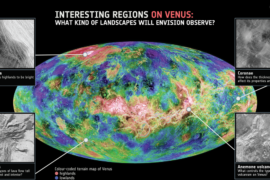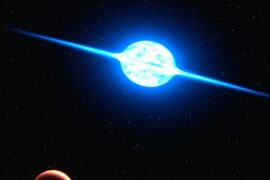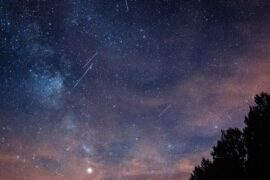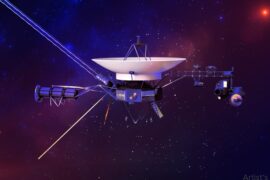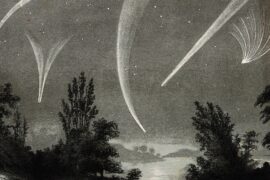Approximately 30 different meteor showers are visible from Earth every year.
Meteor showers are very interesting events for casual observers of the sky because they are spectacular and can be experienced without any equipment. They also spark curiosity because they occur on the same date, at almost the exact same time every year.
But why? and what causes a meteor shower?
Meteor showers are caused by the debris that is left by the tail of a comet. When Earth passes by the spot where its orbit meets the orbit of a comet, this debris (mostly pieces of ice, dust, and rock) enters the atmosphere. These pieces (called meteors at this point) burn up due to the friction and light up as they are disintegrated.
When this occurs at night, you get the beautiful show that we call meteor showers.
During a meteor shower, thousands of meteors enter the atmosphere, but most of them are too small to be seen and are destroyed almost immediately. From Earth’s surface, you can generally see between 10 and 100 meteors. Because of how they look, these meteors are also colloquially known as shooting stars.
The number of shooting stars that you can see in a meteor shower slightly varies from year to year and it depends on how much time has passed since the last time the comet passed by Earth’s orbit. Comets usually have wider and more elongated orbits around the Sun than Earth and might only pass by the same spot once every 100 years.
Why do comets leave debris behind?
Comets leave these clouds of dust and residual material for the same reason they have tails.
Since they are mostly made out of ice, some pieces of their surface are slowly disintegrated due to the rising temperatures as their orbit takes them closer to the Sun. This material forms the tail of the comet and some of it is left behind.
Because they are constantly breaking apart, the lifespan of the comets that we see from Earth is generally less than one million years, which is the blink of an eye in astronomical times.
Why do meteor showers occur every year?

One cool characteristic about meteor showers is they are extremely punctual and consistent. They occur every year on the same date at the same time.
This happens because Earth passes by the same point of its orbit every year where the debris cloud was left by the tail of a comet. Even if the comet doesn’t pass by the same point yearly, not all of the material is burned in a single meteor shower. However, the meteor showers caused by comets that have very long orbits, get shorter and less spectacular every year until the time the comet passes by again.
Why are meteor showers named after constellations?
You will hear that meteor showers are named something like the Perseids, Orionids, or Lyrids. And you might notice that these names are all based on constellations (Perseus, Orion, Lyra).
Meteor showers are named after constellations because their location in the sky is consistent every year. Because of this, they are named after the constellation that is in the general area of the sky where they occur.
The stars in constellations are located many light-years away from Earth while meteor showers happen right here on Earth’s atmosphere. The two are only related by their position in the sky but they have nothing to do with each other.
Summary
- Meteor showers are caused by meteors left by a comet burning up in the sky as they enter Earth’s atmosphere.
- Meteor showers have a consistent time, date, and even location because they happen every year at the same point where the orbits of Earth and the comet cross each other.
- Meteor showers are stronger if the comet just passed by.
Enjoyed this article?
Get daily 10-minute PDFs about astronomy to read before bed!
Sign up for our upcoming micro-learning service where you will learn something new about space and beyond every day while winding down.


